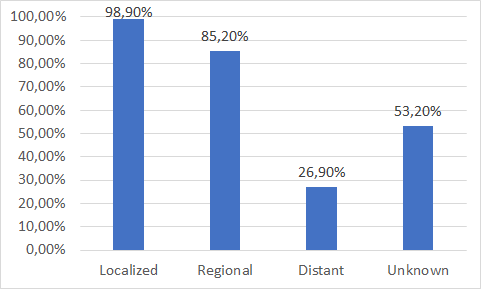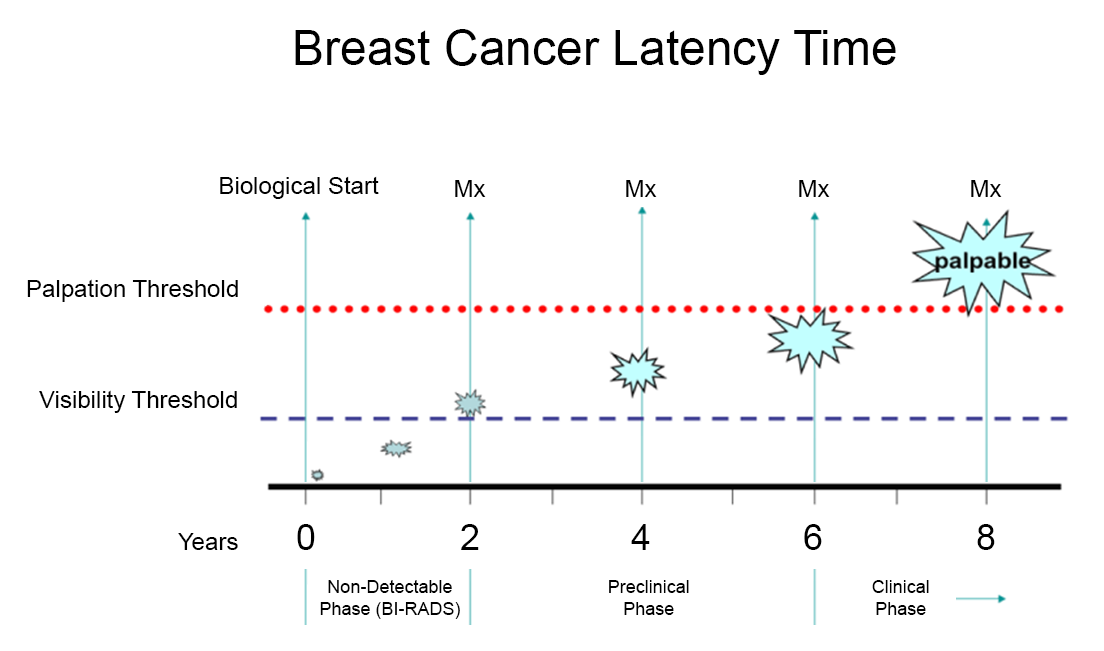Breast Cancer
Overview
Breast Cancer starts when cells in the breast begin to grow out of control. These cells usually form a tumor that can often be seen on an X-ray or felt as a lump. The tumor is malignant (cancerous) if the cells can grow into (invade) surrounding tissues or spread (metastasize) to distant areas of the body. Breast Cancer occurs almost entirely in women, but men can get it, too.
Breast cancers can start from different parts of the breast: most breast cancers begin in the ducts that carry milk to the nipple (ductal cancers); some start in the glands that make breast milk (lobular cancers); and a small number of cancers start in other tissues in the breast.
Types of Breast Cancer
Breast Cancer can be separated into two big different types based on the way the cancer cells look under the microscope:
- Carcinomas: type of cancer that starts in the cells that line organs and tissues like the breast (epithelial cells). In fact, Breast Cancers are often a type of carcinoma called adenocarcinoma, which is carcinoma that starts in glandular tissue
- Sarcomas: type of cancer that stars in the cells of muscle, fat, or connective tissue.
In some cases a single breast tumor can be a combination of different types or be a mixture of invasive and in situ cancer, and in some rarer types of breast cancer, the cancer cells may not form a tumor at all.
Breast Cancer can also be classified based on proteins on or in the cancer cells, into groups like hormone receptor-positive or triple-negative.
Risk Factors
A number of factors may increase your risk of Breast Cancer. Some risk factors can be managed, for instance, by quitting smoking or drinking, but other factors can’t be controlled, such as your family history.
Risk factors for Breast Cancer include:
- Aging
- Genetic risk factors
- Family history of breast cancer
- Personal history of breast cancer
- Race and ethnicity
- Dense breast tissue
- Certain benign breast conditions
- Lobular carcinoma in situ
- Menstrual periods
- Previous chest radiation
- Diethylstilbestrol exposure
- Birth control
- Hormone therapy after menopause
- Drinking alcohol
- Being overweight or obese
- Sedentary lifestyle
Signs and Symptoms
Although many types of breast cancer can cause a lump in the breast (usually a painless, hard, and irregular edges mass), not all do. There are other symptoms of breast cancer you should watch out for and report to a health care provider, such as:
- Breast lump or mass
- Swelling of all or part of a breast (even if no distinct lump is felt)
- Skin irritation or dimpling
- Breast or nipple pain
- Nipple retraction (turning inward)
- Redness, scaliness, or thickening of the nipple or breast skin
- A nipple discharge other than breast milk
Sometimes a Breast Cancer can spread to lymph nodes under the arm or around the collar bone and cause a lump or swelling there, even before the original tumor in the breast tissue is large enough to be felt. Swollen lymph nodes should also be reported to your doctor.
Prognosis
Nowadays, breast cancer has become a very common disease condition in women that are between 30 and 50 years old. In the case of this kind of cancer, the 5-year relative survival rate for women with stage 0 or stage I breast cancer is close to 100% and about 93% for those in stage II. In stage III the 5-years survival rate is more or less 72%, and therefore it is not so lethal as other cancer are at this level of development. Nevertheless, breast cancers that have spread to other parts of the body are more difficult to treat and tend to have a poorer outlook. Metastatic, or stage IV breast cancers, have a 5-year relative survival rate of about 22%. Still, there are often many treatment options available for women with this stage of breast cancer.
Breast Cancer Diagnosis
PLEASE NOTE: EARLY DIAGNOSIS IN CANCER IS VERY IMPORTANT BECAUSE CANCER THAT’S DIAGNOSED AT AN EARLY STAGE, BEFORE IT’S HAD THE CHANCE TO GET TOO BIG OR SPREAD IS MORE LIKELY TO BE TREATED SUCCESSFULLY. IF THE CANCER HAS SPREAD, TREATMENT BECOMES MORE DIFFICULT, AND GENERALLY A PERSON’S CHANCES OF SURVIVING ARE MUCH LOWER.
As shown in the chart below, in Breast Cancer, like many other cancers, mortality is substantially higher in patients whose disease is diagnosed in late stage or has metastasized to other organs.

State of the Art
In terms of breast cancer diagnosis, there is a wide range of techniques for its detection. These are: breast exam; imaging techniques such as X-ray scan ―or more commonly known as mammography―, breast ultrasound and magnetic resonance imaging; and biopsy. However, some limitations are noticed: firstly, the low resolution of the manual examination as well as the need the suspicious nodule or mass to have a apreciable size (palpable thresold); secondly, the added cost from the sophisticated imaging methods as well as the need the suspicious nodule or mass to have a minimum size (visibility thresold); and finally the stress derived from the biopsy, a high invasive method.

Diagnosis Revolution
Here is where OncoBREAST Dx test can help by being an innovative, non-invasive, accurate, and cost-effective diagnosis solution, based in a simple blood test that can detect Breast Cancer with 91.7% of sensibility and 93.6% of specificity, while reduces ―in a very significantly way―, the number of false positives (FP) and false negatives (FN) typical of other diagnosis procedures, which translates into savings of up to 90% of the biopsies that patients must undergo to confirm or discard malignancy in the face of a suspicious finding.
If do you want to read more about OncoBREAST Dx, our Multiple Biomarkers Disease Activity Algorithms (MBDAAs) for an innovative, non-invasive, accurate, and cost-effective Breast Cancer diagnostics, please click on next button:

